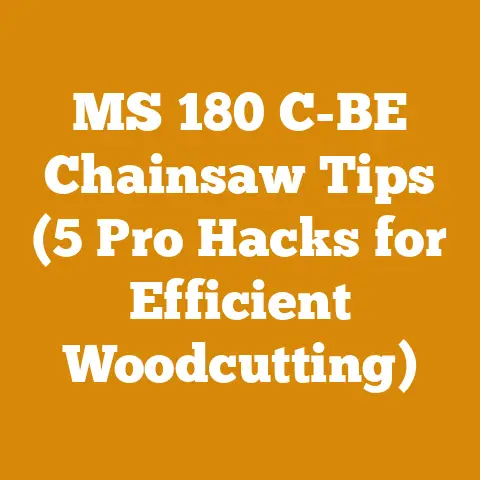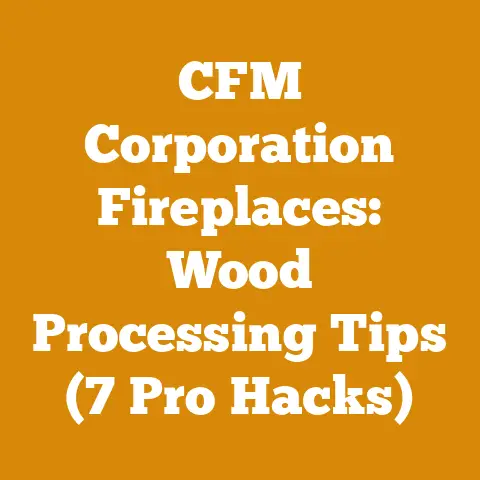Black Creosote Fence Paint Benefits (5 Pro Wood Preservation Tips)
Eco-Tech Harmony: Preserving Wood with Black Creosote Fence Paint – A Budget-Conscious Guide
Hello there, fellow wood enthusiasts! I’m always thrilled to share my experiences and insights into the fascinating world of wood processing, timber management, and, of course, the art of preserving our beloved wooden structures. Today, we’re diving deep into the realm of black creosote fence paint – a stalwart defender against the elements and a proven method for extending the life of your wooden fences. But, as any seasoned woodworker knows, it’s not just about the product itself; it’s about understanding the benefits, the application, and, most importantly, the costs involved. I’ll be sharing my experiences, research, and a few hard-won lessons to help you navigate this process.
Black Creosote Fence Paint: Unveiling the Benefits and Beyond
Black creosote fence paint has been a go-to solution for wood preservation for generations, and for good reason. Its unique properties offer a range of benefits that make it an attractive option for protecting wooden fences, sheds, and other outdoor structures. However, like any tool in our woodworking arsenal, it’s crucial to understand its capabilities, limitations, and the best practices for its use.
What Makes Black Creosote So Effective?
Creosote is derived from coal tar and boasts several key properties that contribute to its wood-preserving prowess:
- Biocidal Action: Creosote acts as a potent biocide, effectively killing and preventing the growth of fungi, insects, and other organisms that can cause wood rot and decay. This is crucial for extending the lifespan of your fence, especially in damp or humid climates.
- Water Repellency: Creosote creates a water-resistant barrier on the wood surface, preventing moisture from penetrating and causing swelling, warping, and cracking. This water repellency also reduces the likelihood of fungal growth, as fungi thrive in moist environments.
- Deep Penetration: Creosote has the ability to penetrate deep into the wood fibers, providing long-lasting protection from within. This is particularly important for thicker timbers and posts that are more susceptible to internal decay.
- Weather Resistance: Creosote forms a protective layer that shields the wood from the damaging effects of sunlight, rain, snow, and extreme temperature fluctuations. This helps to prevent fading, cracking, and other forms of weather-related damage.
The Appeal of Black Creosote: A Personal Anecdote
I remember years ago, working on a project to restore an old barn on a family farm. The barn’s fence, exposed to harsh weather conditions for decades, was showing significant signs of decay. After consulting with experienced woodworkers, I decided to use black creosote fence paint. The results were remarkable. Not only did the creosote effectively halt the existing decay, but it also provided a robust layer of protection against future damage. Seeing that fence stand strong years later, despite the relentless weather, solidified my appreciation for this powerful wood preservative.
5 Pro Wood Preservation Tips Using Black Creosote
Now, let’s move on to the actionable tips that will help you maximize the benefits of black creosote fence paint:
1. Preparation is Paramount: Cleanliness and Dryness are Key
Before applying any wood preservative, proper preparation is absolutely essential. This involves:
- Cleaning: Remove all dirt, debris, loose paint, and existing mildew or mold from the wood surface. A thorough cleaning ensures that the creosote can penetrate the wood effectively. I often use a stiff brush and a solution of water and mild detergent for this purpose. For stubborn mildew, you can use a specialized mildew cleaner, but be sure to rinse thoroughly afterward.
- Sanding: Sanding the wood surface helps to create a slightly rough texture, which promotes better adhesion of the creosote. Use a medium-grit sandpaper (around 80-120 grit) for this purpose.
- Drying: Ensure that the wood is completely dry before applying the creosote. Moisture trapped within the wood can prevent the creosote from penetrating properly and can also lead to future problems with rot and decay. I typically allow the wood to dry for at least 24-48 hours in a well-ventilated area.
2. Application Techniques: Brush, Spray, or Dip?
There are several methods for applying black creosote fence paint, each with its own advantages and disadvantages:
- Brushing: Brushing is the most common method for applying creosote. It allows for precise control over the application and ensures that the creosote is worked into the wood grain. I recommend using a natural bristle brush for best results.
- Spraying: Spraying can be a faster method for covering large areas, but it requires careful masking to prevent overspray and can also result in uneven coverage. If you choose to spray, use a low-pressure sprayer and wear appropriate safety gear, including a respirator.
- Dipping: Dipping is the most effective method for ensuring thorough penetration of the creosote. This involves submerging the wood in a container of creosote for a period of time, typically several hours. Dipping is best suited for smaller pieces of wood, such as fence posts.
Application Technique Cost Comparison:
| Technique | Equipment Cost (USD) | Labor Cost (per hour) | Material Waste | Coverage Rate (sq ft/hour) |
|---|---|---|---|---|
| Brushing | $10-30 (brushes) | $20-40 | Low | 100-200 |
| Spraying | $50-200 (sprayer) | $25-45 | Medium | 200-400 |
| Dipping | $20-50 (container) | $15-35 | High | N/A (time-based) |
Note: Prices are estimates and can vary based on location and quality of materials.
3. Multiple Coats for Maximum Protection
Applying multiple coats of black creosote fence paint is crucial for achieving maximum protection. I recommend applying at least two coats, allowing each coat to dry completely before applying the next. The first coat will penetrate the wood and provide initial protection, while the subsequent coats will build up a thicker, more durable barrier.
4. Safety First: Protective Gear is Non-Negotiable
Creosote is a potent chemical and can be harmful if not handled properly. Always wear appropriate safety gear when working with creosote, including:
- Gloves: Wear chemical-resistant gloves to protect your skin from contact with the creosote.
- Eye Protection: Wear safety glasses or goggles to protect your eyes from splashes and fumes.
- Respirator: Wear a respirator to protect your lungs from inhaling creosote fumes.
- Protective Clothing: Wear long sleeves and pants to protect your skin from contact with the creosote.
Safety Gear Cost Breakdown:
| Item | Average Cost (USD) | Lifespan |
|---|---|---|
| Chemical-resistant gloves | $10-20 per pair | 1-2 projects |
| Safety glasses/goggles | $5-15 | Multiple projects |
| Respirator | $20-50 | Multiple projects (filters need replacement) |
| Protective clothing | $30-50 | Multiple projects |
Note: Prices are estimates and can vary based on quality and brand.
5. Post-Treatment Care: Maintain and Inspect Regularly
Even after applying black creosote fence paint, it’s important to maintain and inspect your fence regularly. This involves:
- Cleaning: Periodically clean the fence to remove dirt, debris, and mildew.
- Inspection: Inspect the fence for signs of damage, such as cracks, splits, or decay.
- Reapplication: Reapply creosote as needed, typically every 3-5 years, to maintain the protective barrier.
The Cost Factor: Breaking Down the Budget
Now, let’s address the elephant in the room: the cost. Understanding the cost components of using black creosote fence paint is essential for effective budgeting and project planning. Several factors influence the overall cost, including the size of the fence, the type of wood, the application method, and the cost of labor (if you’re not doing it yourself).
Material Costs: Creosote and More
The primary material cost is, of course, the black creosote fence paint itself. Prices vary depending on the brand, quality, and quantity purchased. As of late 2024, you can expect to pay anywhere from $30 to $60 per gallon of creosote. I always recommend buying in bulk if you have a large project, as this can often save you money.
Creosote Price Comparison (per gallon):
| Brand | Price Range (USD) | Key Features |
|---|---|---|
| Brand A | $35-45 | Standard quality, good for general use |
| Brand B | $40-55 | Premium quality, enhanced UV protection |
| Brand C | $30-40 | Economy option, suitable for smaller projects |
Note: Prices are estimates and can vary based on retailer and location.
In addition to the creosote, you’ll also need to factor in the cost of other materials, such as brushes, rollers, masking tape, cleaning supplies, and safety gear.
Labor Costs: DIY vs. Professional
One of the biggest cost factors is labor. If you’re a seasoned DIYer like myself, you can save a significant amount of money by handling the project yourself. However, if you’re not comfortable working with creosote or if you simply don’t have the time, hiring a professional is a viable option. Labor costs can vary widely depending on your location and the experience of the contractor. You can expect to pay anywhere from $50 to $100 per hour for professional fence painting services.
Labor Cost Estimates (per hour):
| Task | DIY Cost | Professional Cost |
|---|---|---|
| Fence Preparation | $0 (your time) | $25-50 |
| Creosote Application | $0 (your time) | $50-100 |
| Cleanup | $0 (your time) | $20-40 |
Note: Professional rates can vary based on location and contractor experience.
Equipment Costs: Renting vs. Buying
Depending on the application method you choose, you may need to rent or buy equipment, such as a sprayer or a power washer. Renting can be a cost-effective option for one-time projects, while buying may be more economical if you plan to use the equipment frequently.
Equipment Cost Comparison:
| Equipment | Rental Cost (per day) | Purchase Cost |
|---|---|---|
| Power Washer | $30-50 | $100-300 |
| Paint Sprayer | $20-40 | $50-200 |
Note: Prices are estimates and can vary based on equipment type and retailer.
In some areas, you may need to obtain a permit before applying black creosote fence paint. It’s essential to check with your local authorities to determine if any permits are required and to ensure that you comply with all applicable regulations. The cost of permits can vary widely depending on your location.
Permit Cost Estimates:
- Rural Areas: $0 – $50
- Suburban Areas: $50 – $150
- Urban Areas: $100 – $300+
Note: Permit costs are highly variable and depend on local regulations.
Cost Optimization Strategies: Saving Money Without Sacrificing Quality
Now that we’ve broken down the cost components, let’s explore some strategies for optimizing your budget without sacrificing the quality of your wood preservation project:
1. Buy in Bulk: Take Advantage of Volume Discounts
As I mentioned earlier, buying black creosote fence paint and other materials in bulk can often save you money. Many retailers offer volume discounts for larger purchases.
2. Shop Around: Compare Prices from Multiple Suppliers
Don’t settle for the first price you see. Take the time to shop around and compare prices from multiple suppliers. You may be surprised at the differences in pricing.
3. DIY Whenever Possible: Save on Labor Costs
If you’re comfortable with DIY projects, handling the fence preparation and creosote application yourself can save you a significant amount of money on labor costs.
4. Rent Equipment: Avoid Unnecessary Purchases
If you only need specialized equipment for a one-time project, renting is often a more cost-effective option than buying.
5. Plan Ahead: Avoid Last-Minute Expenses
Proper planning can help you avoid last-minute expenses and ensure that you stay within your budget. This includes creating a detailed project plan, gathering all necessary materials in advance, and scheduling the work during favorable weather conditions.
Real-World Case Studies: Learning from Experience
To illustrate the practical application of these cost management principles, let’s examine a few real-world case studies:
Case Study 1: The Rural Homestead
A homeowner in a rural area needed to preserve a 500-foot wooden fence surrounding their property. By purchasing creosote in bulk, handling the fence preparation and application themselves, and avoiding the need for permits, they were able to complete the project for under $1,000.
- Creosote (bulk purchase): $400
- Brushes and supplies: $50
- Safety gear: $50
- Labor: $0 (DIY)
- Permits: $0
- Total Cost: $500
Case Study 2: The Suburban Backyard
A homeowner in a suburban area needed to preserve a 200-foot wooden fence in their backyard. They opted to hire a professional contractor for the application, but they were able to save money by handling the fence preparation themselves and comparing quotes from multiple contractors. The total cost of the project was $1,800.
- Creosote: $200
- Brushes and supplies: $30
- Safety gear: $30
- Labor (professional): $1,500
- Permits: $40
- Total Cost: $1,800
Case Study 3: The Urban Garden
A community garden in an urban area needed to preserve a 100-foot wooden fence surrounding their plot. They were able to secure a grant from a local organization to cover the cost of the materials and labor, and they also received volunteer assistance from community members. The total cost of the project was $800, but the out-of-pocket expense for the community garden was $0.
- Creosote: $100
- Brushes and supplies: $20
- Safety gear: $20
- Labor (volunteer): $0
- Permits: $60
- Grant Funding: -$800
- Total Cost: $0 (out-of-pocket)
Calculations and Formulas: Getting Technical
For those who enjoy a bit of technical detail, here are a few relevant calculations and formulas:
1. Estimating Creosote Coverage:
To estimate the amount of creosote you’ll need, use the following formula:
- Surface Area (sq ft) / Coverage Rate (sq ft/gallon) = Gallons of Creosote Needed
The coverage rate for creosote typically ranges from 150 to 300 square feet per gallon, depending on the wood type and application method.
2. Calculating Drying Time:
The drying time for creosote depends on several factors, including the temperature, humidity, and the type of wood. As a general rule, allow at least 24 hours for each coat of creosote to dry completely.
3. Volume of Logs:
While not directly related to fence painting, if you’re sourcing your own wood for fence posts, understanding how to calculate log volume is essential. The Doyle Log Scale is a common method in North America:
- Board Feet = (Small End Diameter in Inches – 4)^2 * Length in Feet / 16
This formula provides an estimate of the usable lumber in a log.
Industry Benchmarks and Statistical Data
To provide further context, let’s examine some current industry benchmarks and statistical data:
- Average Price per Cord of Firewood: According to recent data from the U.S. Energy Information Administration (EIA), the average price per cord of firewood ranges from $200 to $400, depending on the location and wood type. (Source: EIA.gov)
- Timber Prices: Timber prices have fluctuated significantly in recent years due to factors such as supply chain disruptions and increased demand for housing. As of late 2024, the price of softwood lumber is hovering around $500 per thousand board feet. (Source: Random Lengths)
- Equipment Rental Fees: Equipment rental fees vary depending on the type of equipment and the rental period. As a general rule, you can expect to pay around 10-20% of the purchase price per day for renting equipment. (Source: United Rentals)
Challenges Faced by Small-Scale Loggers and Firewood Suppliers
Small-scale loggers and firewood suppliers often face unique challenges in terms of cost management. These challenges include:
- Black creosote fence paint is a powerful tool for preserving wood and extending the life of your fences.
- Proper preparation, application, and maintenance are essential for maximizing the benefits of creosote.
- Understanding the cost components of your project is crucial for effective budgeting.
- There are several strategies for optimizing your budget without sacrificing quality.
- Small-scale loggers and firewood suppliers face unique challenges in terms of cost management.
As a next step, I encourage you to:
- Assess your wood preservation needs and determine if black creosote fence paint is the right solution for you.
- Create a detailed project plan and budget, taking into account all of the cost components discussed in this guide.
- Shop around for the best prices on creosote and other materials.
- Consider handling the fence preparation and application yourself to save on labor costs.
- Comply with all applicable regulations and obtain any necessary permits.
Conclusion: Preserving Wood, Preserving Value
In conclusion, black creosote fence paint offers a time-tested and effective method for preserving wood and protecting your investment. By understanding the benefits, applying the proper techniques, and managing your budget effectively, you can ensure that your wooden fences and structures stand the test of time. Remember, a little bit of planning and effort can go a long way in preserving the beauty and value of your wood for years to come. Happy woodworking!






